One of the core research themes of the Centre for Midwifery, Maternal and Perinatal Health is ‘Improving care for mothers and babies in low and middle income countries’. Researchers are working with colleagues to improve care for mothers and babies in countries such as Nepal, India, and Uganda. We are working with organisations such as the World Health Organization and the International Confederation of Midwives. This group is led by Professor Edwin van Teijlingen.
Below you can read two stories highlighting our international collaborations: one in Nepal where we are helping to deliver midwifery education and the second from Jo Lake, a BU alumni who has spent much of her career volunteering in low-income countries.
Delivering midwifery education in Nepal
Over a number of years, CMMPH has had a research presence in Nepal, and many of you would have read about our activities in the news articles accessed via the CMMPH Newsletters, as well as the many journal articles that have been published. Below is a snapshot of one of our recent projects.
The COVID crisis has highlighted the importance of midwives in ensuring safe, woman-centred maternity care. However, many low and middle income countries still struggle to have an appropriate level of skilled midwives. Strengthening midwifery education to international standards is a key step to improving quality of care and reducing maternal and newborn mortality and morbidity.
The BU midwifery team supported by midwifery colleagues at Dalarna University from Sweden is helping to develop midwifery education in Nepal in a project funded by GIZ (Gesellschaft für Internationale Zusammenarbeit), the German equivalent of DFID. As part of this exciting collaboration CMMPH has appointed the UK midwife Margaret Walsh as Visiting Faculty. Margaret is currently working for the German aid organisation in Kathmandu, training both local midwifery educators and midwifery students.
The Nepalese government, in line with the Sustainable Development Goals, is determined to reduce its current maternal mortality rate from 239 per 100,000 live births to 70 per 100,000 live births by 2030. Midwifery has been shown to reduce maternal and newborn mortality and improve the quality of care.
In order to skill up the midwifery workforce, new Bachelor of Midwifery Science (BMS) programmes are being developed in Nepal but there is a shortage of appropriately trained and educated midwives to teach on the courses. The project involves developing a framework for providing academic support to nurse/midwife educators with the aim to enhance their midwifery knowledge and skills. Also, to design in collaboration with key stakeholders in Nepal a bridging programme to upskills current maternity workers so they can apply for their midwifery licence to practice. The final phase of the project will be an evaluation.
The team: C. Angell, R. Arnold, K. Erlandsson, V. Hundley, J. Ireland, M. Irving, P. Mahato, C. Pedersen, A. Taylor, E. van Teijlingen; S. Way & J. Wood
Working in Zambia as a midwife: Jo Lake (BU midwifery alumni)
Background
Zambia had an estimated 224 maternal deaths (per 100,000 women in pregnancy or up to 6 weeks after delivery), 21 stillbirths (per 1,000 total births) and 21 neonatal deaths (per 1,000 live births) in 2015. Contrastingly in the UK there were 9.8 maternal deaths (per 100,000), 1.72 neonatal deaths (per 1,000 live births) and 3.93 stillbirth (per 1,000 total births) between 2015-16. Zambia is currently ranked at 136 out of 183 for maternal mortality and 149 out of 175 for infant mortality (death of a baby under 1 year). The UK is ranked at numbers 30 and 26 respectively. It has long been Zambia’s aim to continue reducing their rate of maternal and neonatal mortality.
My journey
I have been volunteering as a Midwife in Ikelenge District in the North Western Province of Zambia since October 2016. This district is approximately 17 hours’ drive form the capital city on bumpy and sometimes impassable roads.
For the first two years in Zambia I worked at a busy mission hospital. It was the referral centre for all high risk maternity cases in the immediate area and sometimes would even receive referrals from other hospitals outside of our district. We had approximately 1,000 births per year which may not seem busy, but when you only have two staff on duty to cover ALL maternity/neonatal cases you can be quite rushed off your feet! There was also a well-equipped theatre at this facility where emergency C-sections (under spinal or Ketamine) were carried out as well as explorative surgeries and emergency treatment of gynaecological/obstetric emergencies, including massive haemorrhage (uterine balloon tamponade or hysterectomy), septic abortion and ectopic pregnancy.
Theatre is run with a skeleton staff of one doctor, one scrub nurse and one midwife/nurse. My role in theatre would be to monitor both the mother and baby (there are no anaesthetists in that part of Zambia) and undertake any resuscitation as necessary. The doctor responsible for maternity theatre cases will also be on-call for the rest of the 170 bed hospital at the same time.
Whilst working at this hospital I also helped organise emergency medical flights and accompanied patients when necessary. Such maternity referrals would most commonly be neonates with congenital abnormalities that required surgery at more specialist centres, such as, coanal atresia or hydrocephalus.
Since 2018 I have been working at a small rural health centre in the same district. We only have about 150 births a year but hold a large antenatal, postnatal and under 5's caseload. The nearest referral centre with a doctor and theatre is 45 minute drive away. Many of the nurses/midwives at these types of clinics have been posted there straight out of training and therefore have not had the experience necessary to handle complex cases or identify risk factors. This has implications since more than eight out of 10 births (84%) occur in these types of rural facilities. Many of the women who come to give birth at our facility will have travelled great distances and have had little to no antenatal care. This is largely due to the proximity of our facility to the Angolan and DR Congo border. In Zambia itself, the majority of women (97%) age 15-49 receive antenatal care (ANC) from a skilled provider (doctor, nurse, midwife and clinical officer). It is not uncommon to have multi-gravid women (often G8+) turn up at our clinic in labour, even though technically they should be attending the nearest hospital instead, but the staff care for them as best they can.
I have helped staff develop maternity and neonatal referral guidelines and other protocols based on Zambian and WHO guidelines. We have also commenced holding a quarterly neonatal/stillbirth death reviews to help us reflect on poor outcomes and improve the care we offer our women in the future. In addition to this, a visiting team of clinicians from the UK taught all the staff how to carry out simple clinical audits to assess the quality of the healthcare we are providing to the women who access our services. Since doing these audits we have seen huge improvements in HIV testing of pregnant women at point of contact (in accordance with Zambian Ministry of Health Guidelines).
I find that most staff are eager and extremely dedicated, often working long hours away from family and friends, in rural settings that are just as foreign to them as they are to me, especially since most of them have come from big towns.
Special projects
Maternity Workshop September 2019
In 2019 our facility hosted a four day maternity workshop in managing neonatal and obstetric emergencies. Alongside a visiting midwife from the UK, I took a lead role in compiling the timetable, course content and facilitation of both taught and practical sessions. We also invited midwives from the local district hospitals to help facilitate the practical sessions and provide cultural perspectives. The course content was specifically tailored to staff working in rural health facilities with limited personnel, resources and access to diagnostic tests.
As an incentive for attending the course and as a means of enabling delegates to be able to put the things they’d learn into practice, we sent each attendee away with an “emergency kit” for use in their Rural Health Centre (RHC). Each kit contained a USB rechargeable headtorch (ideal for RHC’s who usually only have a small solar light for use in emergencies at night), all the equipment needed to insert a Uterine Balloon Tamponade in the case of massive postpartum haemorrhage, an adult ambubag and a neonatal ambubag for cases of maternal collapse or babies born in poor condition.They also went away with a lanyard with a set of 16 “Emergency Prompt” cards (printed onto water proof and wipe proof plastic) with management care plans for the majority of the emergency scenarios covered during the workshop. Included in their packs were A5 laminated copies of the A-F assessment and neonatal resuscitation algorithm for them to stick on the wall at their health centre and to act as another prompt when dealing with such situations.
Special Interest
Although I love hands-on midwifery, my area of special interest is in training midwives and nurses; particularly in encouraging and nurturing critical thinking and decision-making skills. I also enjoy reflective thinking and try to promote this where I work. At our recent maternity workshop I held a session on Respectful Maternity Care and was blown away by the humility of the staff as we all recognised areas where women centred care could be improved upon, not only by “confessing” misdemeanours to one another, but also by committing to makes changes. I enjoy producing accessible and simple resources, such as the prompt cards I designed for the staff who attended our workshop in 2019.
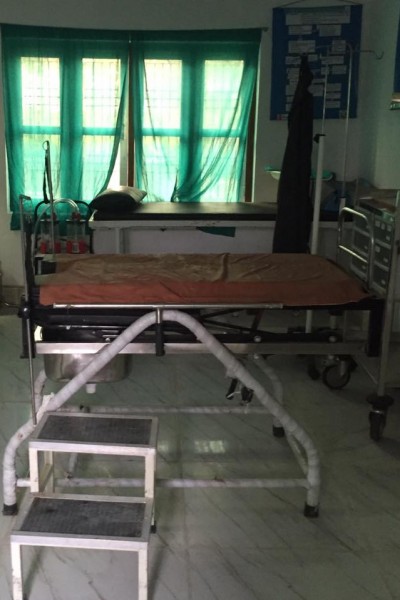
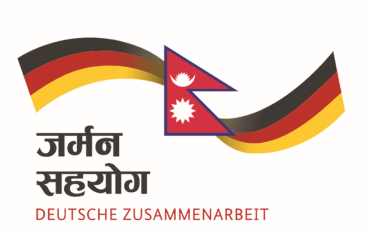
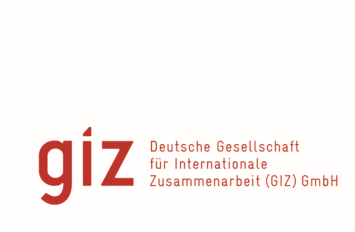
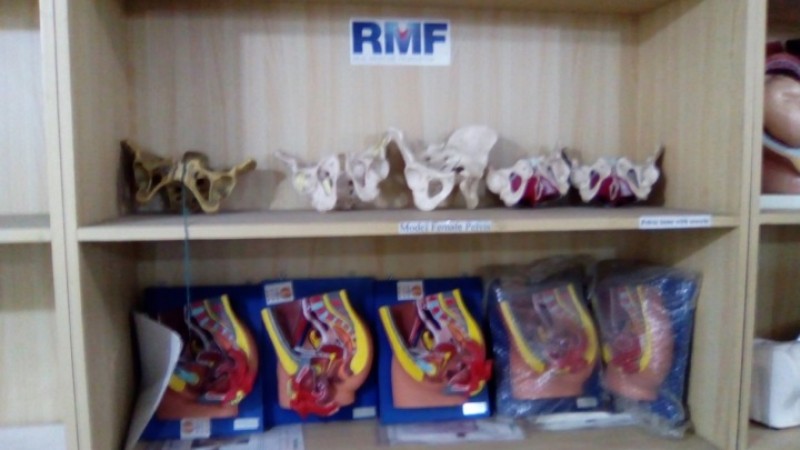
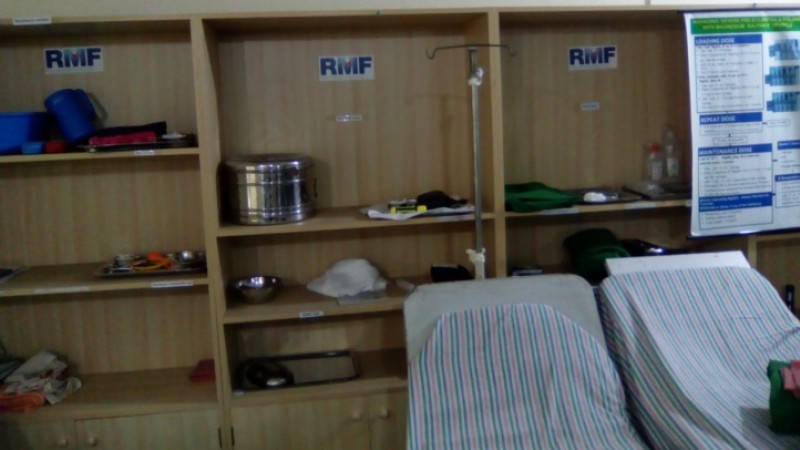
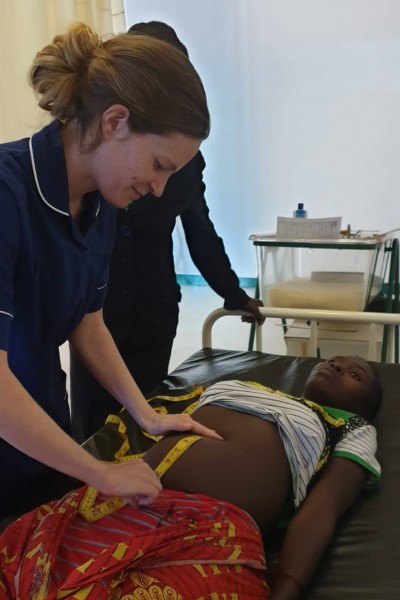
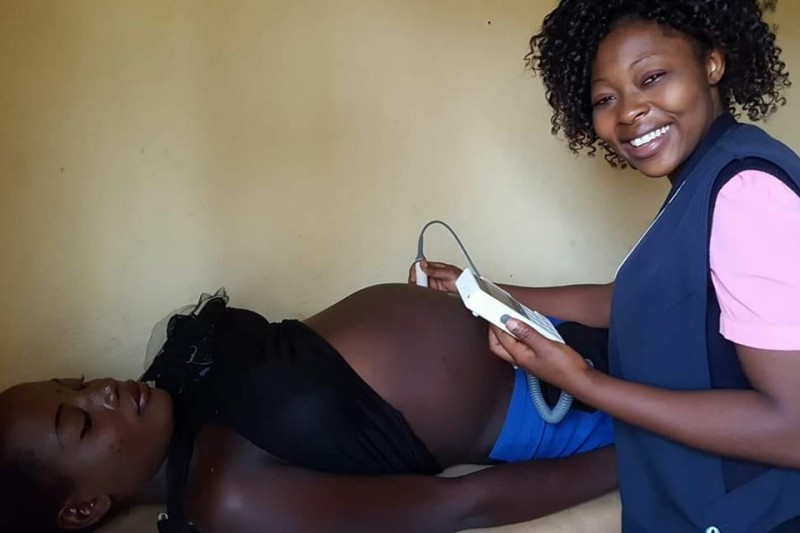 Sylvia is the only other midwife at the clinic where I work
Sylvia is the only other midwife at the clinic where I work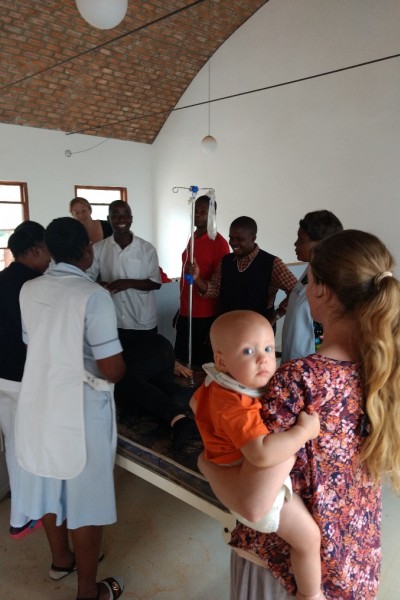 This photo shows me helping with teaching whilst being a mum.
This photo shows me helping with teaching whilst being a mum.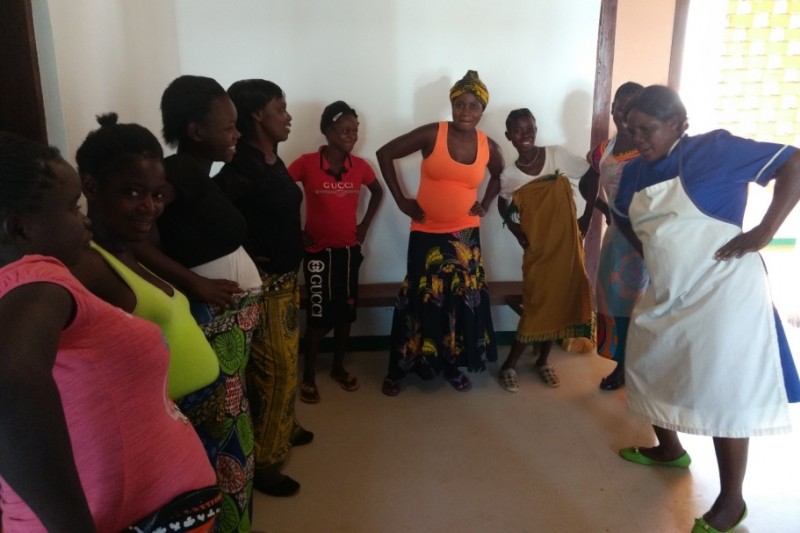 Teaching pregnant women how to keep active during labour.
Teaching pregnant women how to keep active during labour.